Last Updated on October 27, 2024 by Ellen
I tend to think of it as the other Ati project.
Indeed, we’ve been so wrapped up in rebuilding the hen house and getting electric service connected that the water system work gets overlooked.
But actually, drinking water improvements are a high priority part of our efforts at helping the disadvantaged indigenous Ati people of Malay, Aklan on Panay Island, Philippines — where our world travel has paused during the COVID crisis.
The other Ati project
The water situation
The Ati living in the upper hilltop village have a decent freshwater spring. The flow is about eight liters per minute (my personal measurement). The water has been tested and declared safe to drink. Ati households frequently fill plastic containers at the spring and carry them to their small bamboo homes to survive.
But the location of the spring is awkward at best. I would call it dangerous and sometimes treacherous due to weather. Anyone fetching water, including women and children, must negotiate a steep, uneven, often slippery, dirt path down into a sharp ravine to fill their jugs.
Then even worse, they lug the full containers back up the difficult hillside trail.
But check out the running water faucet photo back at the top of this post; a big improvement!
It looks pretty standard. But that drinkable water spigot is the culmination of weeks of trial and error and engineering tinkering.
And it’s made a big difference in daily Ati life already.
In fact, compare that spigot pic with the the photo below showing the previous spot where drinkable water had to be collected; from the yellow plastic drain highlighted beneath the cement tank in the distance where the group of people is standing. And as I said, the hike to get down there – and back up – is no fun.
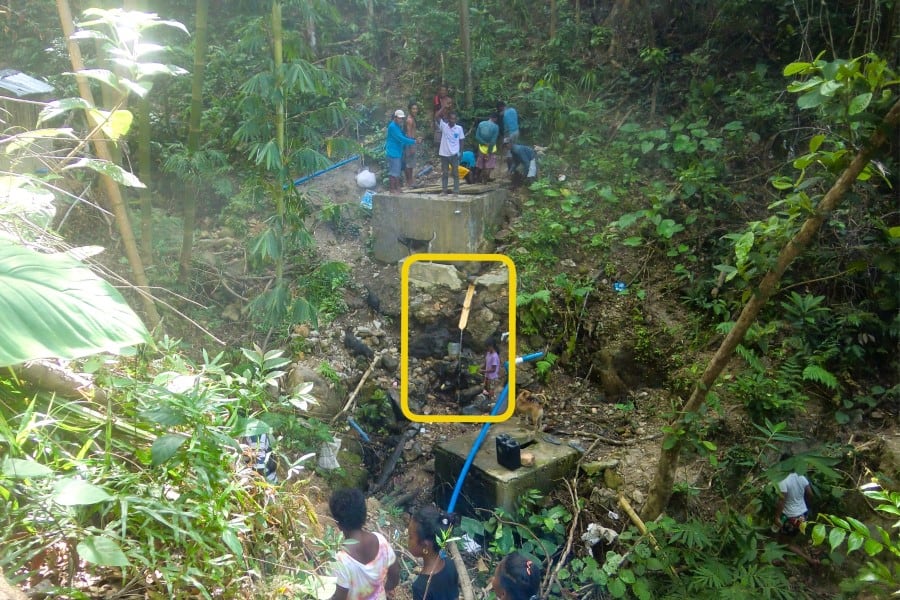
The solution
The plan was simple enough: run a PVC pipe downstream from the 500-liter tank that currently catches the natural flow at the spring. Then end the pipe at a more easily accessible spot where Ati could fill their plastic jugs and bottles to be then carried to their homes to drink.
More than a month ago, when we were buying supplies for the now operating hen house and the home electrical wiring project, we also purchased PVC pipe and fittings and a few other materials for this basic water upgrade.
Over some weeks, when there was downtime, a few of the Ati workers on our payroll would try to arrange the plumbing pieces parts to allow for easier community water collection. Even I joined in on occasion, thinking it would be an easy task.
But because of the terrain and the weather, and the schedule of the other work and some incongruous pipe parts, we could never quite make the gravity fed system work.
Now, finally, after several different pipe placements and disassembles and rebuilds and tests, water is flowing. And the simple on/off faucet is now at a spot far more safely accessed and closer to most of the Ati homes.
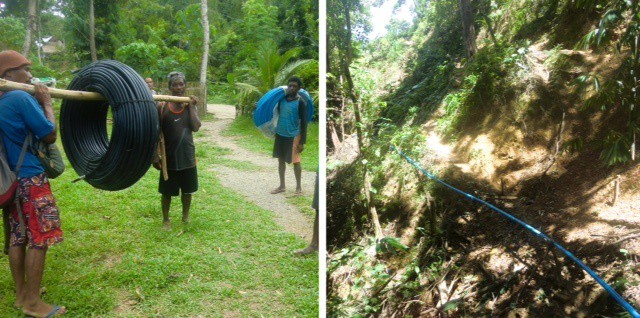
We still aren’t 100% sure exactly (we’re not engineers), but some combination of the following ‘water flow principals’ needed to be just right for the new gravity system to work:
- Pipe start and finish elevation (slope of decline/incline)
- Pressure created by the weight of the collected water in the catch-tank
- Connections of pipes involved & ‘flow friction’ of water inside pipe
It works!
The long and short of it is, that through trial and error, we did finally connect up the right size PVC pipe and run the pipe at exactly the proper elevation slope away from the source, and further combine the correct connections at various points in the system.
Of course, the main problem was the jungle terrain and vegetation, and the fact that we had to curve a few hundred feet away and out of sight of the spring itself. Mostly, we just couldn’t clearly see what we were doing in relation to the source.
But we kept trying. And now – part one of the water project is operational. The water flows.
Part 2 of the other Ati project
Still to come is part two of the other Ati project, where we hope to pump collected water up to a large holding tank atop the hill – eliminating the long walk for gravity fed water entirely (though the spigot will remain usable too).
Part two of the drinking water improvement plan will have to wait until the local power company (AKELCO) provides electricity to the upper village, as any pump will need power.
We do have the electric cabling in place and about 20 Ati homes wired for basic electric service. And AKELCO is currently working through the inspections, certifications, and business and safety measures to activate the electric. Depending on weather, it could take yet more weeks.
Nonetheless, in the meantime, the new gravity fed distribution pipe and spigot and location is being enjoyed by the Ati.
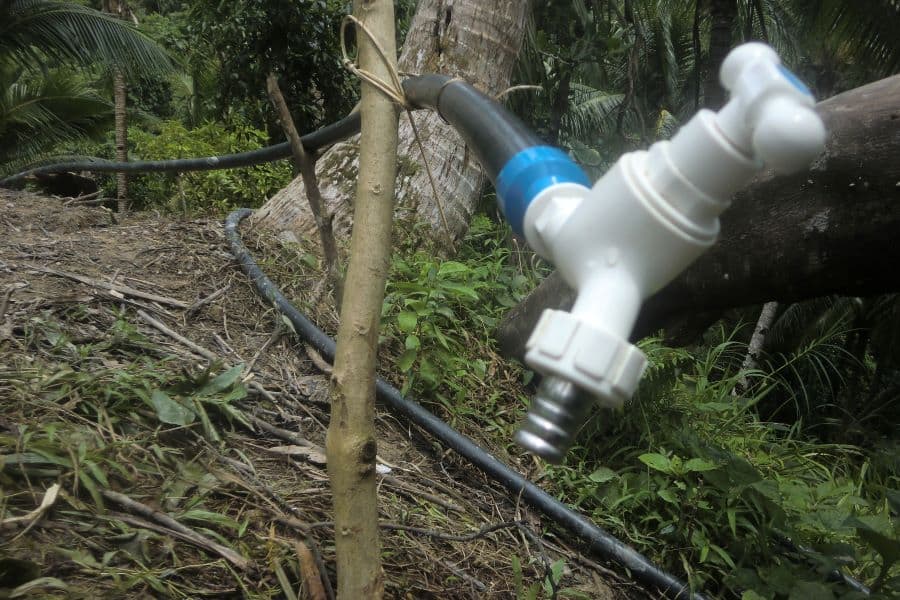
As always, be thankful and generous, happy trails & more beer.
Life is NOW!
What to read next:
- Helping refugees at a camp in Greece
- Living with elephants in Thailand
- Serving lunch to garbage pickers in Mexico
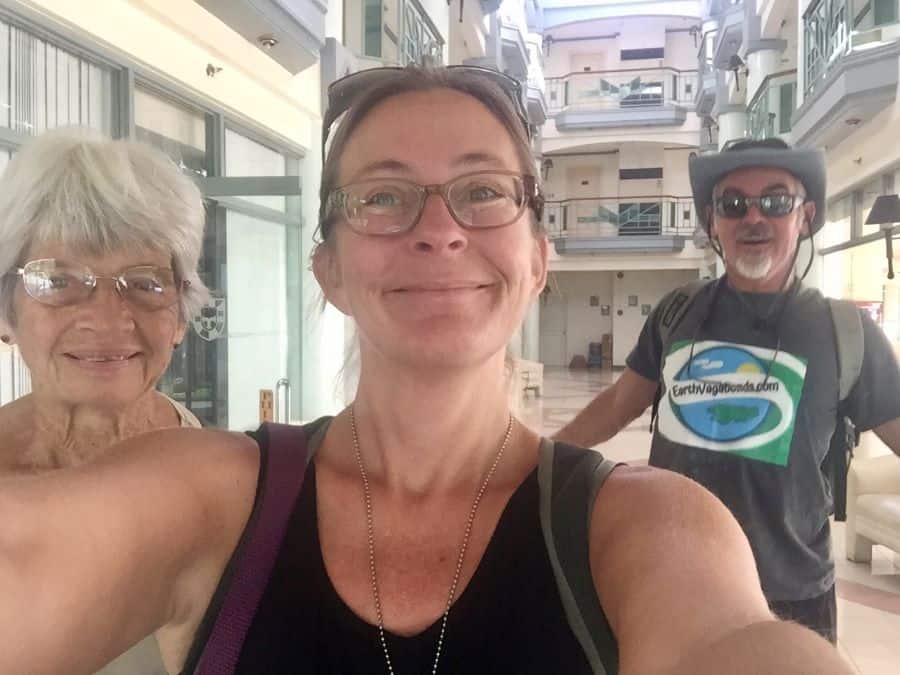
Earth Vagabonds includes Diane, Tedly’s mom, Ellen, and Tedly, or Theo, as we three ride out the pandemic in the Philippines.

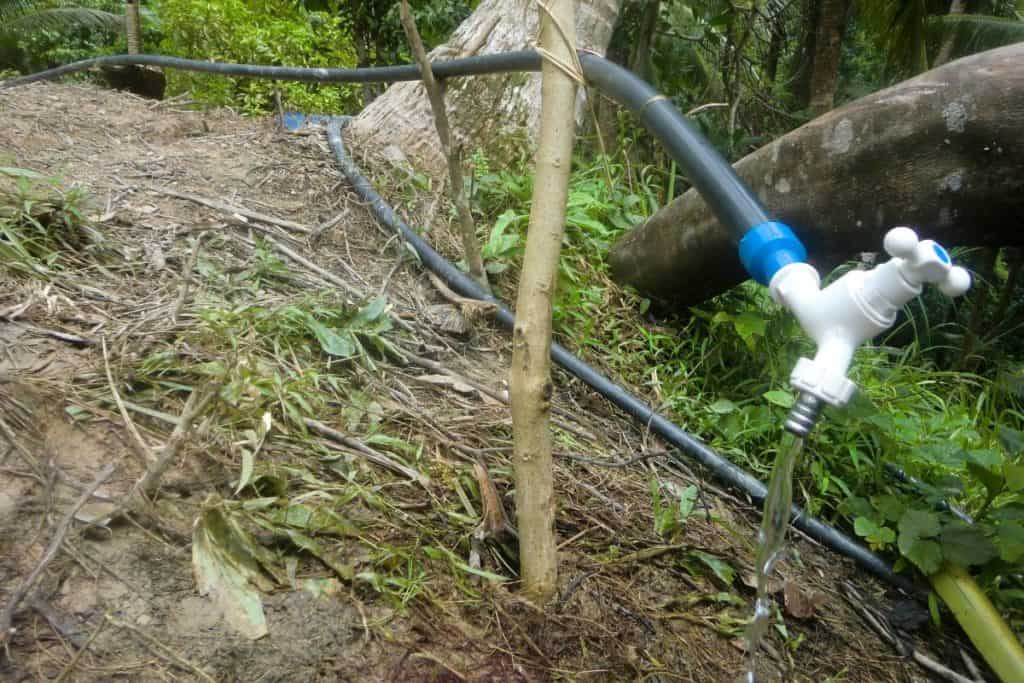
Amazing work, you all! How wonderful that the gravity-fed system works! It sounds like your efforts have truly made the world a better place for many people. Thank you! This kind of news make me proud to be an American and to know you guys!
Awesome job. What perseverance. I talk the big talk but never actually get off my rear end to do anything. Case in point: I write while sitting on my rear end!
Regarding part 2: I am sure that you have already considered solar power to power the pump and dismissed it. I’d love to hear the challenge there of.
Keep up the great work and remember to ask for more financial support when the need arises.
Thank you, Sam!